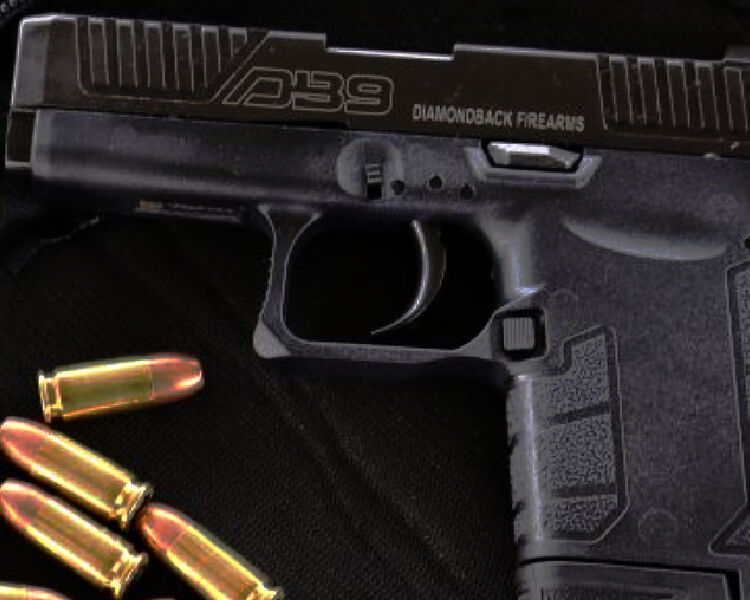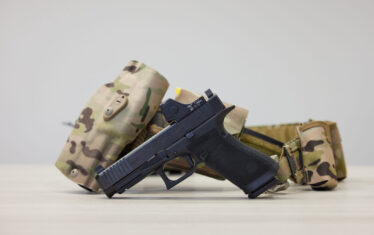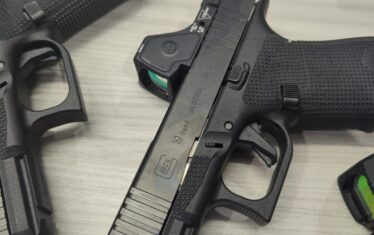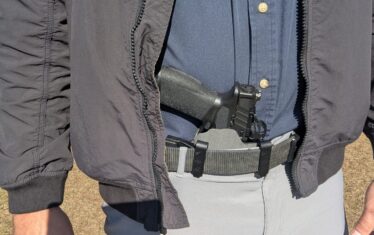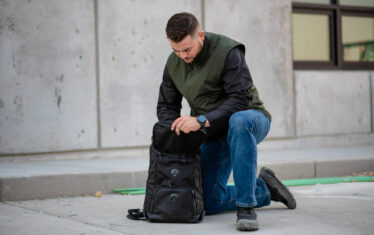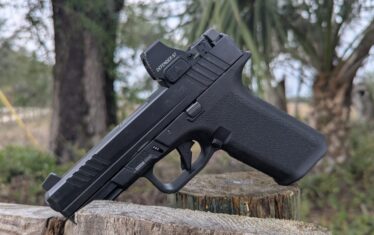If you want a pocket pistol, there are a lot of handguns to choose from but precious few caliber options.
Typically, single-stack .380 ACP pistols and .38 Special snubnosed revolvers fit the bill in the size-to-power ratio. Going any bigger would mean a bigger gun that would print more, weigh down your pants, and be outright impractical.
Even single-stack 9mm pistols that are on the market are better as belt guns. But there was always at least one exception in the Diamondback DB9.
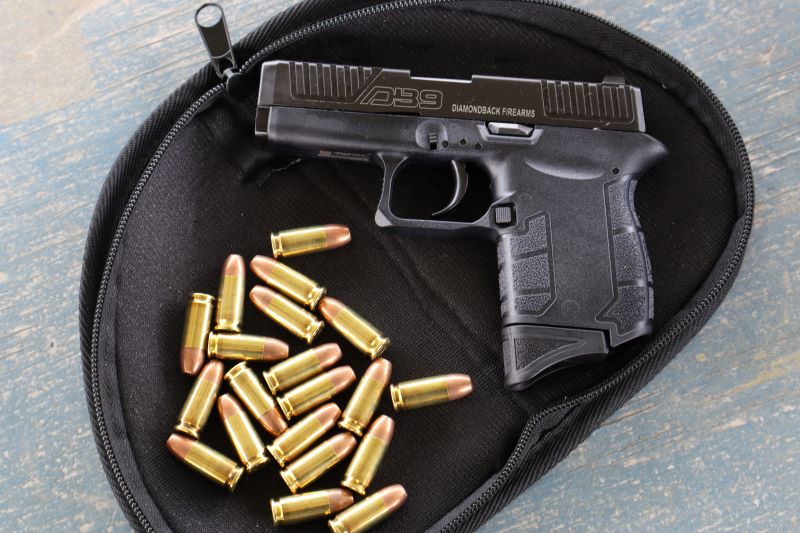
Diamondback Firearms of Cocoa, Florida has been producing the DB9 since 2011. The model is now on its fourth generation of improvements and it remains among the smallest 9mm handguns you can buy.
Pocket pistols are compromised as a rule and the DB9 is no exception. I had the chance to handle and shoot the original DB9 when it first hit the market. I remember it as being onerous to shoot and the ergonomics felt off, somehow. But otherwise, it was a powerful option you could slip into your pocket.
It was also familiarly Glock-like. It was a Glock-like single-stack made before Glock released the G43. The G43 has been out for years yet Glock, or anyone else, can’t seem to shrink it to compete with the DB9, which stays in left field doing what it does since it came out.
Recently, I had the chance to put some rounds through a Diamondback DB9 Gen 4. While the shooting experience isn’t much different than with the original, the overall package is much improved and worthy for deep concealed carry.
Diamondback DB9 Gen 4: Quirks and Features
The Diamondback DB9 does not look remarkable from far away. In a sea of small-framed polymer 9mm pistols, it scarcely stands out until you come closer and put it in your hand alongside its competition.
Single-stack 9mms are not rare today. In fact, they are somewhat passe with the advent of micro-compact pistols like the Sig P365, which holds a few more rounds and is marginally thicker. But the difference between the DB9 and the P365 is noticeable. The DB9 is closer to the size of the Glock 43, but is still a thinner gun overall, with a slide width of only .9 inches. With its slim, six-round magazine loaded, it weighs in at exactly 16 ounces.
The DB9 Gen 4 is a polymer-framed striker-fired handgun that uses a black nitrided stainless-steel slide. Unlike previous iterations, the Gen 4 features wide and tactile cocking serrations at the front and rear of the slide.
The original DB9 came with very low-profile sights. The Gen 4 comes with Glock-compatible three-dot steel sights. It is also now rated for 9mm+P ammunition.
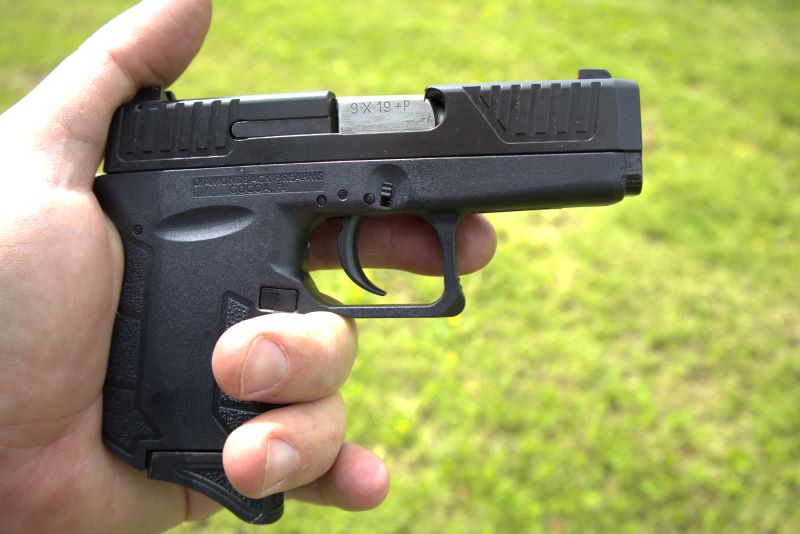
The DB9 features a 3.1-inch stainless steel barrel with a polished feed ramp, which can aid greatly in the cycling of small pistols like this. Aside from improved stippling on the front strap and backstrap of the grip, there is remarkably little difference between it and a first-generation handgun. It has an appreciated beavertail to prevent slide bite and a recessed slide release and magazine release on the left side of the pistol.
The original DB9 was best classed as a double-action style handgun with a trigger that did most of the work of cocking and dropping the striker. The Gen. 4’s trigger is shorter in travel but does the same task overall. Sans the trigger safety, it feels like that on a Glock.
The takedown is likewise similar. With slide drawn back slightly, pull down the takedown lever on both sides of the frame, let the slide run forward, pull the trigger and the slide comes off for further disassembly.
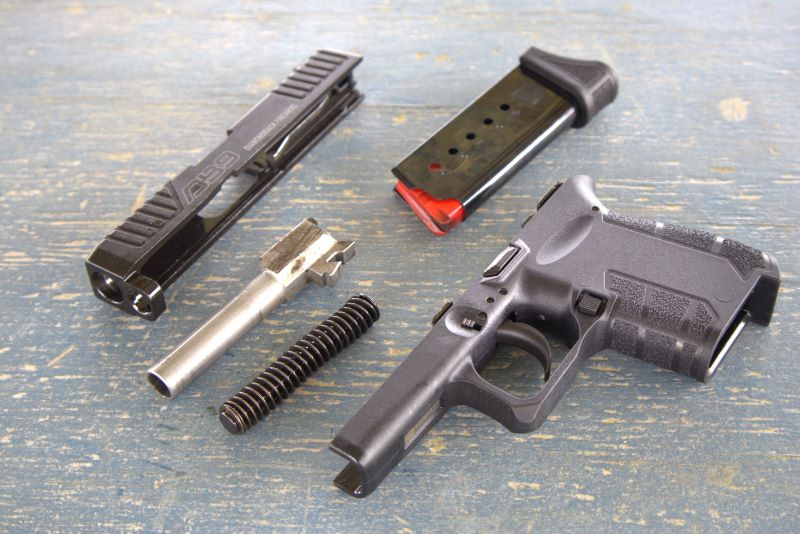
Aside from a few modest improvements, the DB9 seems inwardly little changed from the original. Those early guns were hard to shoot and some users had issues ranging from failures to feed to separation of the steel rails from the polymer frame. So how does the improved Gen 4 DB9 acquit itself? The only way to find out, in this sample size of one, is to hit the range.
Quick Specs
- Model: DB9 Gen. 4
- Caliber: 9mm Luger +P
- Capacity: 6+1
- Barrel Length: 3.1 inches
- Overall Length: 5.7 inches
- Width: 0.9 inch
- Weight: 15.1 oz. (loaded)
On the Range with the Diamondback DB9
Testing the Diamondback DB9 Gen 4 took some time. The pistol came with only one magazine and putting a few hundred rounds through this little pistol required a few range trips to give my thumbs a break from the repetition of loading and firing this little pocket rocket. But I got through it with fewer issues than I had expected.
After a cursory cleaning and lubrication session, I headed to the range and started my testing by simply putting rounds into the berm to check for overall function. I fired a variety of ammunition including Winchester White Box 115 grain FMJ, Hornady Critical Defense 100 grain FTX, and Remington HTP 147 grain JHPs.
In those first hundred rounds, I had a single failure to fully eject using the Remington ammunition. Aside from that, the only issue came from the magazine being tough to load on that sixth round. But after leaving it loaded between range sessions, that magazine loaded effortlessly with some determined thumb pressure.

It is amazing how well you will notice something when you have a particular mission in mind. My impressions of the Diamondback broadened when I returned to the range with more ammo with the intent of putting it on paper. I set out my target stand at a distance of seven yards and loaded up the Diamondback with Winchester 115 grain FMJ.
The Gen 4 Diamondback is a grippier pistol, with generous slide serrations and smart stippling on the front and rear of the grip. But it is still a small pistol chambered in a major cartridge. I found myself surprised at how stiff the recoil spring was compared to other pistols.
Thankfully, that grippiness came to the rescue and I was able to get that slide racked, but the tightness of the spring and the sluggishness of the slide going home gave me the impression that some shooters could short-stroke it if they are not careful. In that event, the steel rear sight is prominent enough to use as a racking aid when pressed against a table.
The rest of the pistol is likewise stiff. The slide release and magazine release are recessed so you do not accidentally bump them while carrying in deep concealment, but that makes them hard to use on the range. At times, I had to rip the magazine out of the grip because it did not want to come loose.
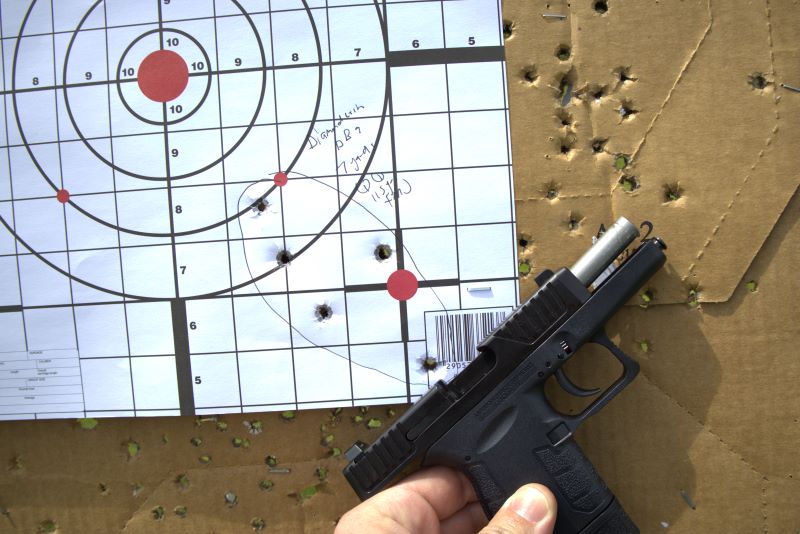
At first, I had trouble figuring my way around the trigger. It is stagey and you can feel the action of cocking the striker and releasing it as you work your way through it. It weighs in at 5 lbs. 7 oz. when measured on my Lyman trigger scale. Not bad for a pocket pistol, but the size of the Diamondback, particularly the length of the grip threw me off.
I prefer to shoot small guns using the crease of my index finger for the best leverage, but I found my rounds hitting off to the right of my aiming point. My larger hands had to move around so I could press the trigger with the pad rather than the crease. From then on, I was on target.
The Winchester 115-grain target loads were snappy but not onerous to shoot and the excellent three-dot sights brought me back on target for follow-up shots. At seven yards, I could coax those rounds into a four-inch group. Is that great? For a pocket-sized handgun that required a grip change, I would say yes.
The accuracy and recoil were consistent, whether shooting those Winchester rounds or switching to Hornady Critical Defense 115 grain or Remington HTP 147 grain hollow points. Recoil and blast were kicked up a notch using Hornady Critical Duty 135 grain +P loads and I had trouble keeping them on target in anything but a slow-fire scenario.
On the opposite end of the spectrum, powder puff Hornady Critical Defense Lite 100 grain rounds were downright pleasant to shoot and overall shot the best out of this handgun. It was more remarkable that this little pistol fed this variety of grain weight with little trouble. I had a single failure to feed using the 147-grain loads, but aside from that, nothing. I expected more excitement.
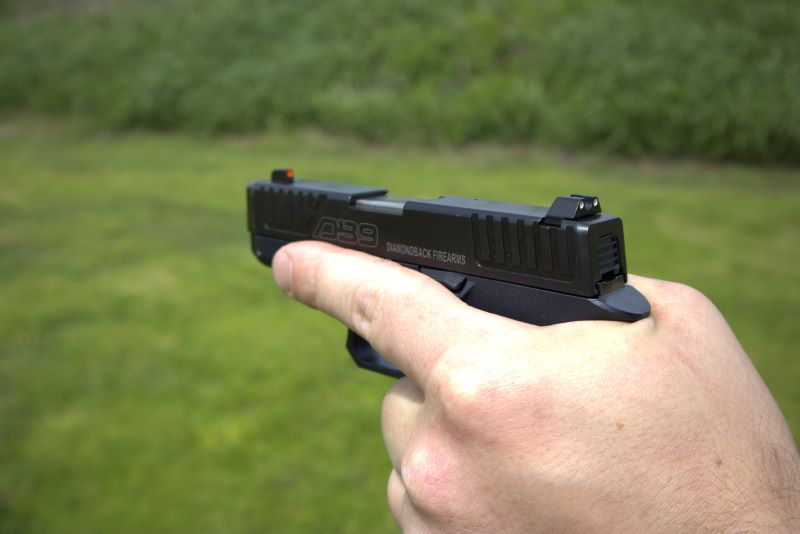
On my final outing with the Diamondback DB9, I shot it alongside my venerable Ruger LCP. That pistol is in .380 and is among the smallest pocket guns you can buy. It is one that I carried religiously and put close to two thousand rounds through.
Like the Diamondback, it came from the factory rough to rack and rough to shoot but that smoothed out in short order. I brought out the LCP to get reacquainted with it and to see how it does relative to a tiny 9mm in the form of the Diamondback.
It came as no surprise that I could shoot the LCP better. It is dimensionally smaller, but the length of the grip does not crowd my palm and the longer trigger reach was more favorable to my bigger hands.
Although .380 is punishing to shoot in very small guns, its relative low power is obvious next to the featherweight Diamondback. In this case, a .380 might actually be a good low-recoil option when we are talking about pistols this small. Although it has superior sights and a shorter trigger, I had to put more mental work toward controlling the Diamondback, leveling it on target, and pressing the trigger for a good hit on steel.
From the close distance of seven yards, I worked my way back out to 25 yards to try my luck. Although my shots could never constitute a group, I was able to keep six for six on a steel silhouette at that distance.
Aftermarket Options
Finding aftermarket accessories on the fly at your big box stores will be hit and miss, but your options improve online.
Aftermarket magazines for the DB9 are the six-round variety that comes with either a flat base plate for best concealment or a finger extension for a better grip. Diamondback offers a +1 extension to make the DB9 a 7+1 handgun.
The Gen 4 DB9 uses Glock 19 compatible sights, so changing up to fiber optic or night sights would not be a difficult task. But laser sights are useful on pocket guns and Viridian sells a quality laser setup.
By far the greatest number of options lay in the number of holsters that will fit the DB9. While there are plenty of Kydex, leather, and hybrid options specifically for the DB9, I found that my Gen 4 DB9 shares some overlap with the Ruger LC9. You might consider the Safariland Model 17 or Model 27 concealment holsters for the mission. Although the DB9 draws comparisons to the Glock 43, the DB9 fits too loosely in those holsters.
Parting Shots: The Diamondback DB9 In Review
Although memories do fade, I recall the old Diamondback DB9 as one of the harder guns to shoot. Diamondback has gone through the effort to offer some real improvements to help us manipulate and shoot such a small handgun and it does shine through, despite the fact that we are still touching off a very light-weight pistol in a service caliber. The controls are likewise small and hard to access, little changed from the original, though arguably necessary in the context of pocket carry.
The new DB9 Gen 4 is better than the original and it is a truly pocket-sized 9mm. In a power-per-pound scenario, the Diamondback is hard to beat. That said, average shooters like me would probably shoot better with less range time by going down to a .380 or up to a larger 9mm handgun.





